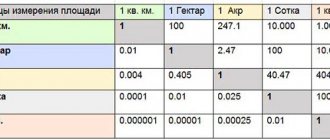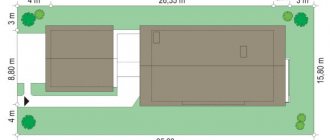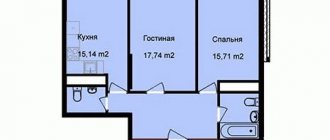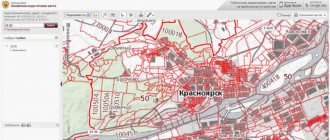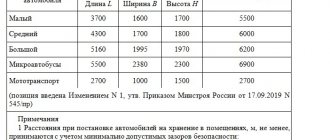The word “weaving” is widely used in informal communication between people, especially those associated with land plots. Yes, yes, what gardener doesn’t know how many acres of land are on his plot? The old generation remembers exactly and by heart about their three or six hundred square meters!
And although in official land documents it is required to indicate the area of plots only in hectares, especially when buying and selling, it is still more common for people to hear and count land for a garden in acres.
- How many square meters in one hundred square meters?
- How to measure the area of a plot of land with a simple shape?
- How to determine the size of a plot in square meters
- How to convert meters to hundreds
- Calculation of land area online using a calculator
- How to calculate the area of a plot of complex shape?
To interact with cadastral authorities, you have to strain and recalculate the area of the plot in hectares (ha). In this material, we propose to understand the terminology and units of land measurement, find out what a “weave” actually is and what is its relationship to a hectare.
How to measure the area of a plot of land with a simple shape?
It is correct to start measuring by measuring the sides of the area. Having hammered pegs into the corners of the area, using a tape measure, take accurate measurements of their length and width. If the area is of the correct geometric shape, then only two sides are needed - length and width. It is better to write down the measurement results in a notepad or enter them into a computer.
But if your site turns out to be asymmetrical, then you need to take measurements of all four of its sides and angles in degrees, or the length of the diagonals - also for recording.
If your vegetable garden is of irregular shape (NOT a square or NOT a rectangular plot), then the method of measuring a plot of land is a little more complicated than multiplying the length and width, but it is quite possible for an ordinary person without special education.
How to measure a hundred square meters with a stick or tape measure
To measure the dimensions of a plot, use a regular tape measure or a special stick reaching a length of 1-2 meters. It is most convenient to use a meter stick. In this case, you don't even need an assistant. To measure a hundredth part, use a stick to lay 10 pieces in one direction, and then turn at a right angle and do the same in the other direction. When using a two-meter stick, the number of segments set aside is reduced to five.
If you have to crawl almost on the ground with a stick, then using a “walking triangle” makes the task much easier, since the person does not have to bend over. Externally, the measuring instrument resembles a triangle - its two sticks are connected at the top point and have a common crossbar in the central part. The lower pointed ends are located at a fixed distance of 1 or 2 m from each other. At the top point there is a handle that makes it easier for the tool to “walk” on the ground. Holding the handle, the device is rotated around one of the legs stuck into the ground. In the next “step”, the other leg is rotated.
When taking measurements with a tape measure, you need an assistant because one person must hold the end of the tool at a given point while another unwinds the tape to the next one. A peg is driven in there, then the next segment is measured. The first peg is driven in at the starting point. The longer the sides of the site and the shorter the tape measure, the more pegs you will need. Finally, all that remains is to count the number of segments between the pegs and multiply their number by the length of the tape measure.
Having measured the length and width of a rectangular or square plot, its area is found by simply multiplying the values. The result obtained will be in m². Since all measurements on a tape measure are in meters and centimeters, after taking measurements the values are converted to hundreds.
How to determine the size of a plot in square meters
To make the calculation as accurate as possible, you will need a tape measure, several pegs and a notepad to record the measurement results. The entire course of the required calculation follows the laws of the school geometry course, which states that to accurately determine the area of a rectangular figure, you should multiply its width by its length, for example:
S=A*B
Where
- A—length, m;
- B—width, m;
- S—area, m2;
For example, if the length of your plot of land is 70 meters and the width is 40 meters, then the area can be calculated as S = 70m * 40m = 2800 m2, that is, in this case, the area of your land is 2,800 square meters.
How to convert meters to hundreds
Considering that 1 hundred square meters is equal to 100 m2, we go the opposite way to convert the data from meters to hundred square meters. This will allow you to obtain correct results of measuring the area of a given land plot. When calculating the number of square meters in a hundred square meters, you need to divide the resulting result by 100, for example:
- plot area - 1000 m2;
- 1000 m2 divided by 100;
- number of acres - 10
If your plot has an irregular geometric shape, but you have correctly calculated its area in square meters, the method for calculating the size in acres remains the same. Large areas are usually measured in hectares, each consisting of 10,000 square meters or 100 acres.
Methods for calculating the dimensions of the land along the perimeter
So, 1 hundred square meters is 100 m. It is important for the land owner to understand the parameters of his plot and know the exact numbers in meters and hundred square meters. The area in acres is obtained by dividing the area indicated in meters by 100. To do this, you will need to measure the area. Let's figure out how to do it for different parameters of the land plot. The shape of the plot is not always classic rectangular, so we will consider options with different parameters of the plots.
By measuring the distances between the milestones and obtaining the area in meters, it is possible to determine its dimensions in acres.
A plot in the shape of a regular rectangle
To measure an area of the correct rectangular shape, do the following:
- drive pegs around the perimeter in the corners of the area;
- measure the distance between them (using a rope or a construction tape when the land is small);
- Calculate the area of a regular rectangle: to do this, multiply the length by the width.
Having received the amount in meters, you can easily convert the value into hundredths: divide the amount obtained by measurements by 100. This way you will get the dimensions in hundredths.
If necessary, distances can be measured in steps: 1 step = 0.7 m (for a person’s height 180 cm). Then the answer to the question “how much is one hundred square meters of land” will be a square with sides of 12-14 steps, which is what one hundred square meters is.
Another handy way to measure distances is a stick, the length of which will be 1 m. A tripod, a simple device of three sticks with a step of 1 m, will speed up the measurement process.
A quadrangle-shaped area with different lengths
To determine the area of a plot of land in the shape of a quadrangle with sides of different lengths, you should:
- Place pegs in each corner;
- measure diagonals;
- multiply the diagonals, divide the result by 2, multiply by the sine of one of the angles between the diagonals. Formula: S = ½(d1*d2)*sinα.
Plot of non-standard shape
The most important thing when taking measurements is to clearly mark the boundaries of the land plot. There are three ways to find out how many acres of land are in a plot of non-standard shape :
- using land surveying. This method is the simplest and at the same time the most accurate. When preparing documents (for example, for property), you should use it. It consists in the fact that the invited specialist determines the area of the allotment using a geodetic method. To do this, he uses a rangefinder, a level, a special tower and other tools. A measuring rod is installed on the boundary stone, and each edge of the area should be clearly visible. Measure the distance between the edges, so the area is visually divided into equal triangles. Then the area of each triangle and the total are calculated. In this way, areas that are very difficult to measure manually will be accurately calculated;
- independent measurement. This method involves installing poles, or pegs, at the corners of the perimeter, after which the distances between each of them are measured. Draw a diagram of the site on paper, divide the land into correct shapes. Then you need to calculate the area of each and add up all the amounts. These arithmetic calculations will give the desired result - the total number of acres. The method will not give accurate results, unlike the first option;
- using Google map. This method provides very rough data and is only suitable for getting a general idea of the site. Points are placed on the map in the corners of the perimeter, they connect and give the finished result.
A clear understanding of the parameters of your land plot will allow you to accurately plan your activities on it and understand how suitable it is for achieving your goals.
Calculation of land area online using a calculator
Today there are quite a few services and online calculators on the network that allow you to calculate the area of a land plot; just use one of the search engines, for example Yandex.
Keep in mind that the online land area calculator will need the exact measurements of all sides of the land in meters for its algorithm to accurately calculate the area of your land.
How to calculate the area of a plot of complex shape?
An irregularly shaped area is more difficult to calculate, and the dimensions of the sides alone will not be enough to calculate the area of a complexly shaped area. Here you will need to know the dimensions of all sides of the garden, and the size of the diagonals. It’s a little easier if one of the corners of the plot is 90 degrees.
Here is an example of calculating acres of land for a complex-shaped dacha plot:
Dimensions of the sides of the land plot, in meters
- Side AB = 69 meters,
- Side BC = 46 meters,
- CD side = 87 meters,
- Side DA = 35 meters,
- Lower left corner is straight (90 degrees)
Using these data, you can determine the lengths of the diagonals BD and AC, and calculate the area of the plot = 3035 square meters (or 30.35 acres).
How to measure a plot of land
The need to know the exact dimensions of a summer cottage may arise for various reasons, but the calculation method will always remain the same. One hundred square meters is equal to 100 square meters, but the area may be slightly larger or smaller due to the unevenness of the sides. For an accurate calculation, you only need a few pegs, a tape measure and some free time.
Dimensions of land
To begin with, it is important to accurately determine the dimensions of the sides. To do this, you need to drive pegs in the corners and use a tape measure to measure the length and width
If the site has identical sides, then there is no need to measure all 4. Be sure to write down the received data on a piece of paper. If the shape of the land plot is irregular, all four indicators will have to be measured. In addition, to carry out calculations it will be necessary to know the angle between the sides. All this greatly complicates the calculations, so in case of minor discrepancies, the values are rounded.
How to calculate square meters
Further actions completely coincide with the rules for calculating area, as in a school geometry course. To determine the size of a rectangle, you need to multiply the width by the length, for example:
- width – 30 m;
- length – 50 m;
- S=20*50;
- The size (area) of the plot is 1000 sq. m.
